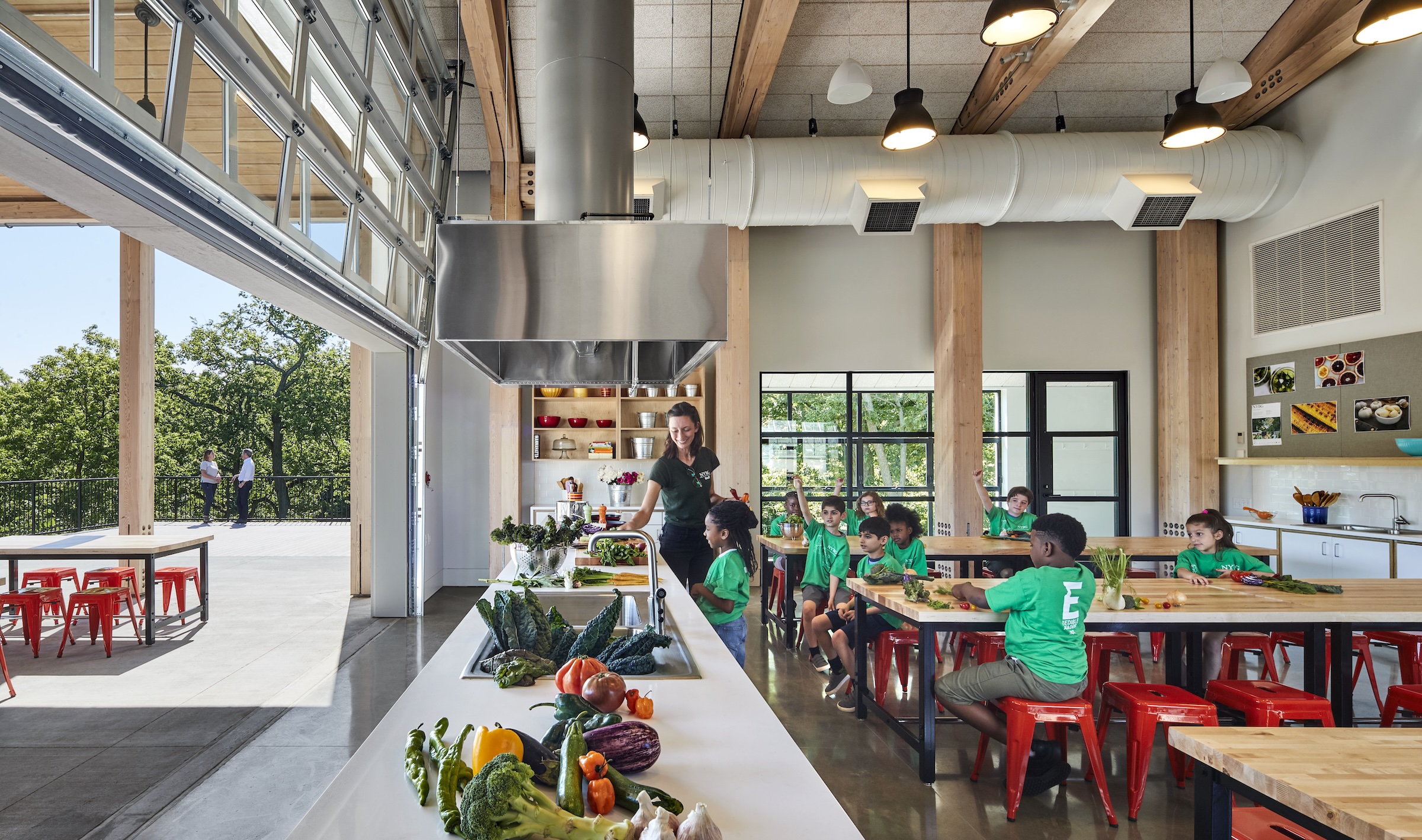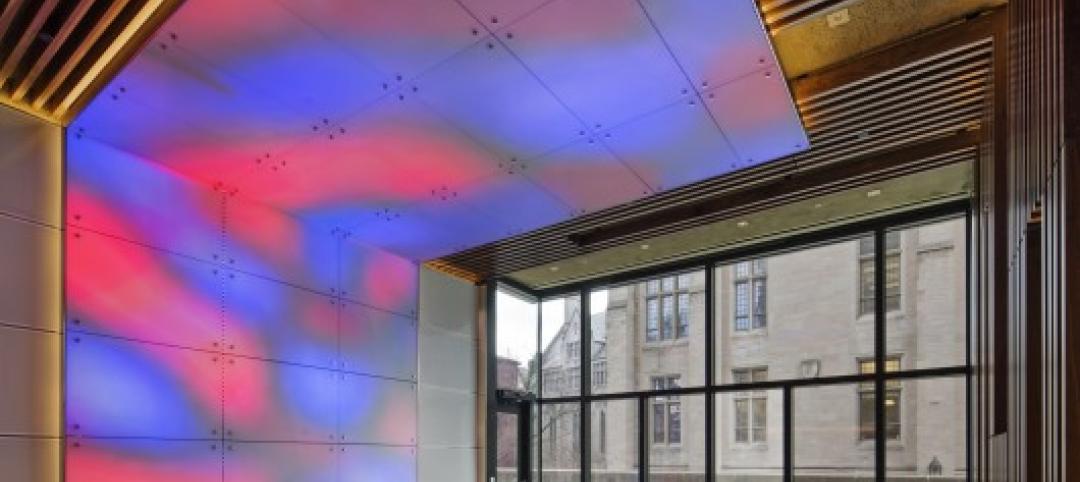Ask Marty Burger to define “healthy” for K-12 schools, and he uses word pairings like “positive and uplifting,” “safe and secure,” and “clean and comfortable.”
Burger, who is CEO for the general contractor American Constructors, has been building schools in Texas for four decades. In the Lone Star State, most new public schools are delivered under CM at Risk contracts, which means that the contractor, architect, and owner are working together early on projects to guide their design.
Like other AEC firms, American Constructors has seen “healthiness” for schools expand beyond air quality or the ease of cleaning interior surfaces. In this post-Covid era, “healthy” and “wellness” are intersecting expectations that, for many school districts, encompass the physical and mental wellbeing of students and teachers, greater access to outdoor spaces for play and learning, and the school’s connection to its community as a hub and resource.
“Healthy schools are now discussed more holistically,” says Paul Aplikowski, a Partner with Wold Architects and Engineers in St. Paul, Minn. “A student’s mental health has become a big topic. There’s also greater emphasis on communities and collaboration.”
“Healthy” is now “a more encompassing idea,” says Todd Ferking, AIA, Principal and National K-12 Education Design Leader for DLR Group. He points to an influential book, “Healthy Buildings: How indoor spaces drive performance,” by Joseph Allen and John Macomber, which connects the amount of outdoor air coming into a room with cognition levels for its occupants. “Making schools healthier requires a holistic approach that challenges some of the code minimums,” says Ferking.
The goal is to create an environment “where kids can thrive,” says Melissa Turnbaugh, Partner and National Education and Innovation Leader for PBK Architects. She points, by way of aspiration, to the “One Health” movement, which contends that occupants and buildings can only be optimally healthy when all are equally healthy. And that’s about more than just raising test scores, says Turnbaugh.
“Healthy” for K-12 schools now rests on three “legs,” says Bradley Sherburne, AIA, Architect and Associate at CetraRuddy Architecture in New York: wellness, as it relates to a building’s programming and circulation; air quality, ventilation, and lighting; and sustainability that focuses on the building’s envelope and energy sourcing. “It’s all about the design of the interior environment,” adds Erica Gaswirth, Senior Associate with another New York-based firm, PBDW Architects. Her must-have list includes programming for physical activity and improved acoustics.
A touchstone for PBDW’s K-12 work has been the Cooke School, a four-story, 69,000-sf K-12 school in East Harlem for special needs students that was completed in 2020. Those students’ physical and learning obstacles required a “healthier” design in such areas as lighting controls and the installation of two stair towers whose landings are filled with natural light.
K-12 school design: Fresh air circulates into classrooms
The healthiness of elementary schools, middle schools, and high schools, say AEC firms, starts with letting more outdoor air into the building. Burger of American Constructors says that HVAC systems have become “the single biggest factor” affecting a school’s healthiness over the last 10 years. He notes, though, that in Texas, an air-conditioned school can vary by as much as 5% humidity, so getting the right balance of outdoor air coming into the building can be tricky. “A lot of schools have undershot this,” he says.
In October, the website spaces4learning.com reported that Nevada’s Clark County School District, the fifth-largest district in the U.S., became the first public school district to achieve the UL Verified Ventilation & Filtration mark in its portfolio. The verification process involves a building-level desktop audit, and measurement and verification of the building’s air-cleaning systems and HVAC performance.
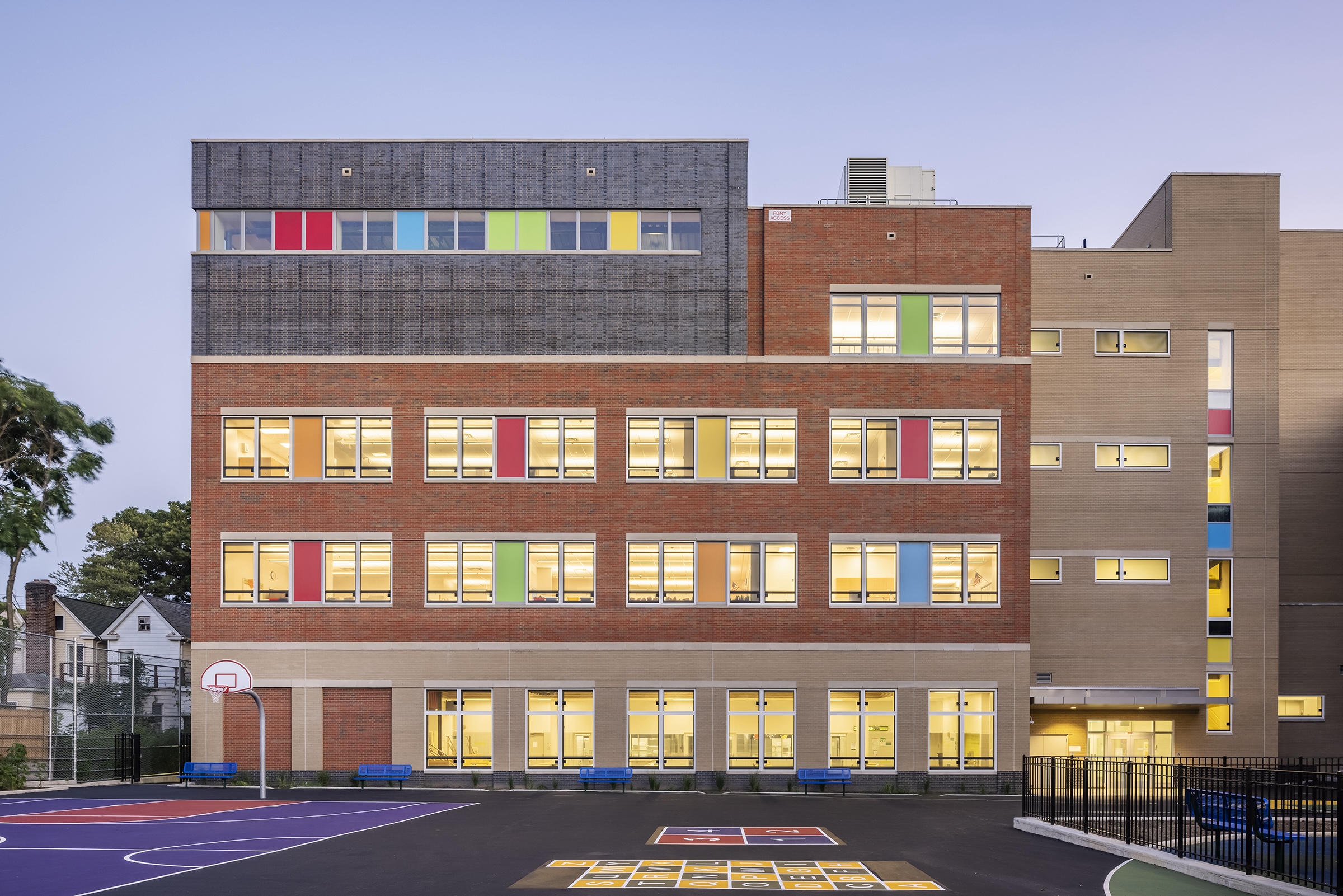
Both DLR Group and Wold have worked on schools recently that specified displacement ventilation, which distributes conditioned air at low velocity from air supply diffusers located near floor level and extracted above the occupied zone, typically at ceiling height. Ferking elaborates that, in colder climates, introducing outdoor air often involves using MERV 13 filters and “decoupling” conditioned air from ventilation.
Neyla Sachakova, AIA, CPHD, an architect with RKTB Architects, says that when it comes to air filtration, there are varying degrees of guidance that require recovery ventilation and MERV 13 filters. She notes the New York City school system has become “pretty stringent” about adhering to these guidelines.
Budgeting for health in school design
When BD+C interviewed Sachakova in November, RTKB was wrapping up the renovation of a school library whose budget did not cover a complete air-system replacement. The consensus among AEC firms is that it’s more difficult to make older existing schools healthier. One factor is age: The National Council on School Facilities estimates that the average age of a school is 50 years. In 2021, the American Society of Civic Engineers gave the condition of the country’s 90,000-plus public schools an overall D+ grade. Many of these learning environments don’t have operable windows.
Another factor is money. The Rocky Mountain Institute (RMI), in its 2023 Healthy Schools Report, asserts that two-fifths of the school districts in the U.S. needed to update or replace HVAC systems in their schools, preferably with all-electric equipment. But RMI also acknowledges the cost and complexities inherent in school renos when it recommends that school districts avail themselves of government and utility financial assistance and incentives to defray the replacement costs, and to consider the lifecycle energy savings from more-efficient HVAC systems.
Ultimately, says DLR Group’s Ferking, renovating a school, versus building new, “is often about the cost of maintenance.”
Outdoor space now a standard feature in school design
Another strategy for making schools healthier is to increase students’ and teachers’ exposure to the outdoors, for both play and learning.
In late October, C.W. Driver began construction of a $110 million, 65,000-sf Malibu (Calif.) High School, for which NAC Architecture is the Executive Architect. When it’s completed in the fall of 2025, the building will have an open breezeway between concrete and copper-clad walls, and outdoor common space shaded by an overhead canopy with built-in photovoltaic panels. One of the partners on this project is Koning Eizenberg Architecture, whose Principal in Charge of Design, Nathan Bishop, notes that the school’s 20-acre campus is on a hillside overlooking the ocean and extending toward an Environmentally Sensitive Habitat Area (ESHA) around the school’s perimeter that will double as an environmental pathway for learning.
“The best lab in the world is the outdoors,” says Bishop. He adds that Malibu High School’s design is at the crossroad of wellness and sustainability. The wellness component encompasses “thinking about how education is taught.” At the behest of the school’s superintendent, Malibu emphasizes project-based learning, where the teaching spaces are organized into clusters for different disciplines. The “healthy” component, says Bishop, includes natural materials, a redistributed administration, and less hierarchy among grades of students. The school site is in a high fire zone, requiring a dedicated outside air system for filtration.
RELATED CONTENT:
- Top 170 K-12 School Architecture Firms for 2023
- Top 80 K-12 School Engineering Firms for 2023
- Top 100 K-12 School Construction Firms for 2023
There is little dispute among AEC firms that incorporating the outdoors into school design is fast becoming a standard. For example, Loci Architecture is currently working on Merrick Academy, a K-8 STEAM-based charter school in the New York City borough of Queens that will start construction later this year and, when completed, will accommodate 1,000 students. The 60,000-sf building will include two rooftop playgrounds and an outdoor garden that “present new programming opportunities,” says Loci’s Principal and Founding Partner Dave Briggs, AIA, LEED AP, CPHD. Briggs says the idea for the roof decks came from the project’s developer.
To accentuate its expertise in this area, PBK has partnered with the Nature Conservancy and the Children and Nature Network to develop school designs that allot more space for such outdoor amenities as nature trails and plantings. PBK has also started its own landscape architecture design and planning division called Edgeland Group.
Elizabeth Stoel, AIA, LEED AP BD+C, Director of Architecture for Cooper Robertson, is seeing more demand for access to outdoor space within school campuses, which she says is “increasingly valuable” to help combat student obesity, and for offering learning gardens that familiarize kids with healthier foods. Improved mental health is also associated with more outdoor exposure for students, Stoel asserts.
Stoel believes that schools should be community resources, and as such can contribute to a community’s health. She points to a recent design her firm did for a school in Philadelphia whose cafeteria and gym could function independently of the rest of the school, and will have their own entrances for community use.
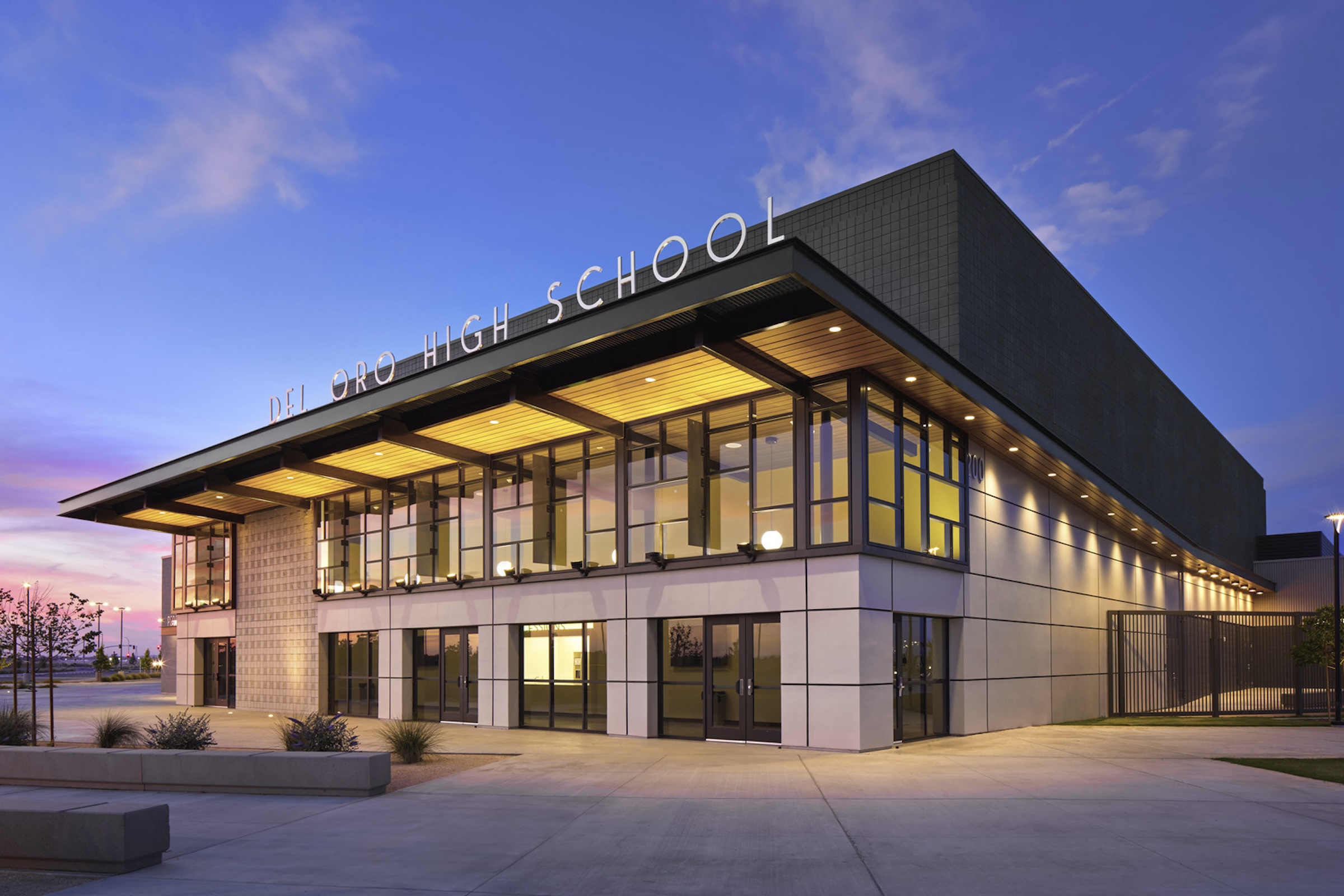
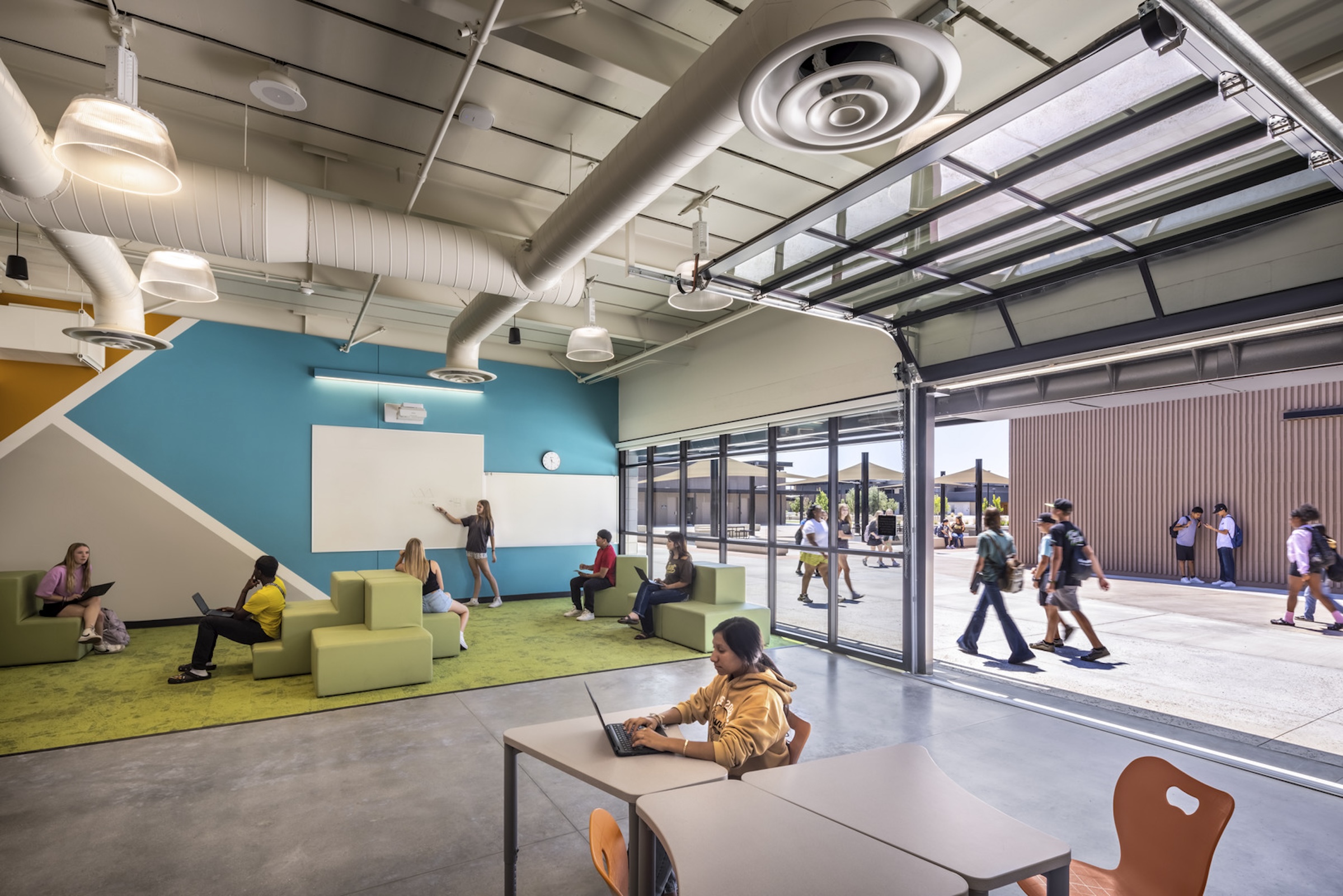
Merrick Academy, says Briggs, will include a community center. And its outdoor spaces will support after-hours programs aimed at engaging the local community.
In North Dakota, LSE Architects is designing Twin Buttes High School for the Manadan Haditsa Arikara Tribe, and the building’s design reflects the tribal leaders’ vision about health, wellness, and self-reliance, says Jennifer Anderson-Tuttle, LSE’s Principal and Director of Education and Public Sector. The 100,000-sf building, which opens in 2025, will accommodate 250 students who otherwise would have to travel 90 miles to attend the nearest high school. Twin Buttes’ campus will also include a dormitory. Anderson-Tuttle says the school’s programming will support the community. (Woodstone Construction is the GC, WSP the civil engineer, and Windward Engineering the structural engineer.)
Anderson-Tuttle refers to the new high school’s “food sovereignty” programming with a greenhouse, gardens, a Meats Lab for processing buffalo meat (which is likely to have commercial possibilities), and a culinary arts lab where students will learn to prepare and cook healthier and nutritious food.
Schools in the District of Columbia have a program where onsite gardens are maintained by students and the community. Other schools compost, says Elyse Roeder, Senior Director for MGAC, which has a school modernization and expansion contract with the district’s Department of General Services and District of Columbia Public Schools.
Net zero is no longer an anomaly in K-12 school design
Roeder says that the District of Columbia is striving for its K-12 schools to be net zero energy. That can mean the addition of solar panels or the installation of geothermal wells 250-500 feet deep. MGAC has delivered two net-zero-ready schools so far: John Lewis Elementary, a teardown and new build that opened in 2021 with a new HVAC system with water-sourced heat pumps and a cooling tower; and Raymond Elementary, a PK-5 school that was renovated with a three-story addition. This project entailed replacing historic windows and motorizing shades that respond to sunlight. The HVAC system “was a big part of the redesign,” says Roeder. And the net-zero schools feature performance dashboards that serve as teaching tools for their students.
While the connection between health, wellness, and net zero doesn’t register with every school district, developer, or AEC firm, it could be argued, as CetraRuddy’s Sherburne does, that “all of these things are at the service of getting” to net zero. RTKB’s Sachokova adds that “it all comes full circle: when we’re trying to reach net zero, we’re usually trying to improve the indoor air quality, which in turn helps decrease the demand for heating and cooling.”
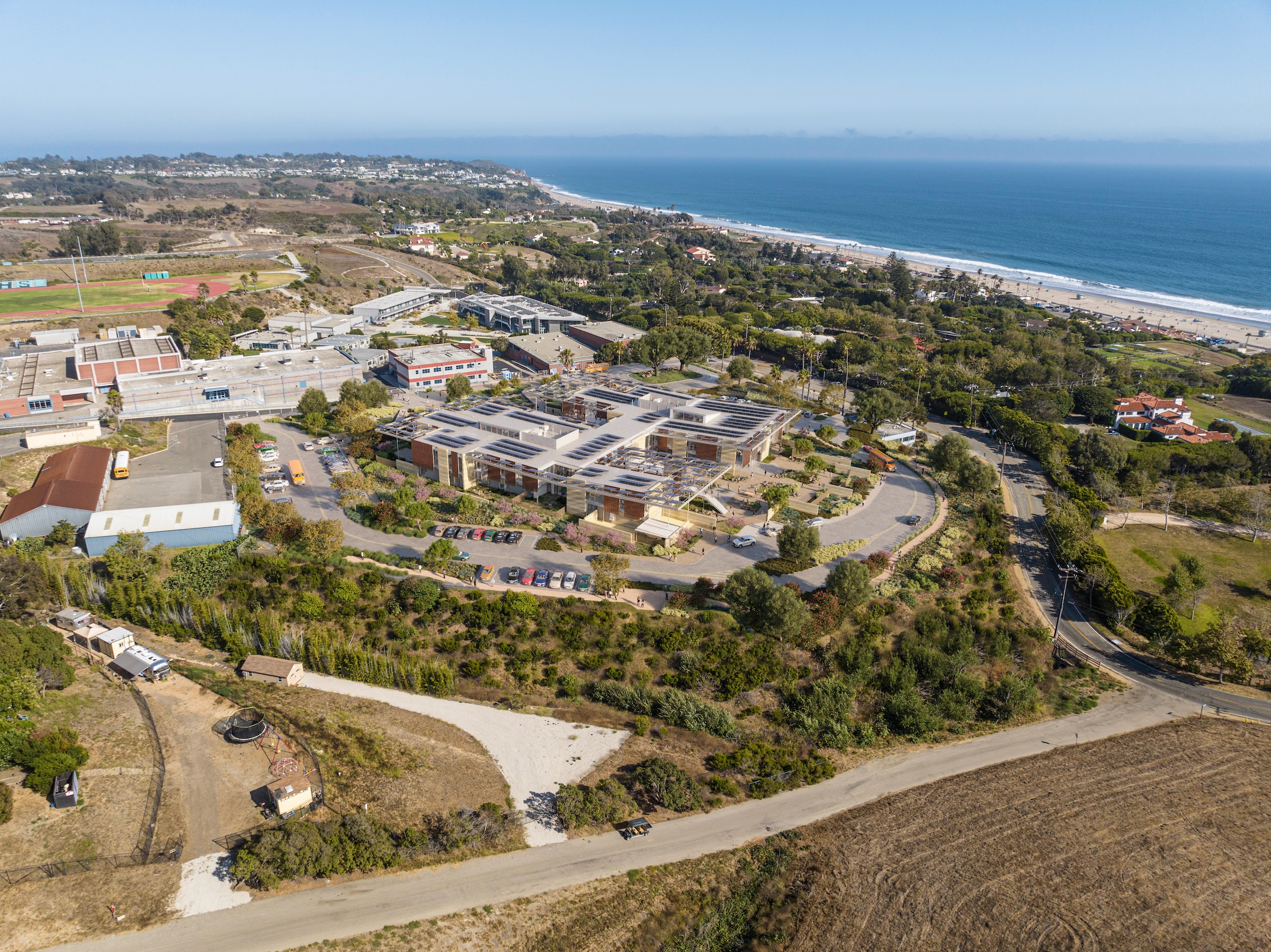
And while taking a net-zero path to healthier schools has cost considerations that might exceed a project’s budget boundaries, the option is less of an outlier than in the past. For example, DLR Group just did its first net-zero school, the 82,000-sf John Rogers Elementary in Seattle, a replacement school that, when it opens in 2025, will feature geothermal heating. (DLR also provided structural engineering services; Lydig Construction is the GC and Metrix Engineering is the geothermal consultant.) Ferking adds that John Rogers’ design addresses students’ social and emotional needs, like abating anxiety.
HMC Architects provided design services for Del Oro High School, a 77-acre campus in Bakersfield, Calif., that opened for 2,500 students in August 2022, the first new high school in the Kern High School District since 2008. The 200,000-sf high school, nestled within farmland, incorporates a solar farm to achieve net-zero energy consumption. (The school itself also offers a safer environment to a community struggling with gang presence.)
Jennifer Wehling, HMC’s Director of Sustainability, advocates for returning design to fundamentals that pay greater attention to how buildings are positioned with nature and light. “Don’t get me wrong, I’m not saying do away with technology. But for so long we got lost thinking that technology could solve everything.”
Speaking of technology, net zero is a target for the Twin Buttes High School, says Anderson-Tuttle, because the site is at the end of the area’s power line, “and there’s outages all the time.” A geothermal high-efficiency system will heat and cool the building, which will draw energy from a large solar field.
Related Stories
| Jun 16, 2014
6 U.S. cities at the forefront of innovation districts
A new Brookings Institution study records the emergence of “competitive places that are also cool spaces.”
| Jun 12, 2014
Zaha Hadid's 'gravity defying' Issam Fares Institute opens in Beirut
The design builds upon the institute’s mission as a catalyst and connector between AUB, researchers and the global community.
| Jun 12, 2014
Tod Williams Billie Tsien Architects' design selected for new UCSC facility
The planned site is a natural landscape among redwood trees with views over Monterey Bay, a site that the architects have called “one of the most beautiful they have ever worked on.”
| Jun 12, 2014
Austrian university develops 'inflatable' concrete dome method
Constructing a concrete dome is a costly process, but this may change soon. A team from the Vienna University of Technology has developed a method that allows concrete domes to form with the use of air and steel cables instead of expensive, timber supporting structures.
| Jun 11, 2014
David Adjaye’s housing project in Sugar Hill nears completion
A new development in New York's historic Sugar Hill district nears completion, designed to be an icon for the neighborhood's rich history.
| Jun 9, 2014
6 design strategies for integrating living and learning on campus
Higher education is rapidly evolving. As we use planning and design to help our clients navigate major shifts in culture, technology, and funding, it is essential to focus on strategies that help foster an education that is relevant after graduation. One way to promote relevance is to strengthen the bond between academic disciplines and the campus residential life experience.
| Jun 9, 2014
Green Building Initiative launches Green Globes for Sustainable Interiors program
The new program focuses exclusively on the sustainable design and construction of interior spaces in nonresidential buildings and can be pursued by both building owners and individual lessees of commercial spaces.
| Jun 9, 2014
10 projects named 2014 AIA Small Project Award winners
Yale's funky new Ground café and a pavilion made from 53,780 recycled plastic bottles are among the nation's best new small projects.
| May 29, 2014
7 cost-effective ways to make U.S. infrastructure more resilient
Moving critical elements to higher ground and designing for longer lifespans are just some of the ways cities and governments can make infrastructure more resilient to natural disasters and climate change, writes Richard Cavallaro, President of Skanska USA Civil.
Sponsored | | May 27, 2014
Grim Hall opens the door to fire safety with fire-rated ceramic glass
For the renovation of Lincoln University’s Grim Hall life sciences building into a state-of-the-art computer facility, Tevebaugh Associates worked to provide students and faculty with improved life safety protection. Updating the 1925-era facility's fire-rated doors was an important component of the project.


